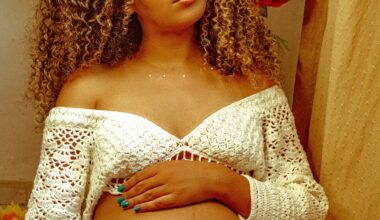Introduction
Hair conditioning has always been an integral part of our hair care regimen, enhancing the texture and appearance of our tresses. However, like Goldilocks and her porridge, the quest for the right amount often leads to a puzzling maze. Use too little, and your hair screams for more hydration. Use too much, and you might just drown it in excess. In this eye-opening guide, we’ll shed light on the art and science of hair conditioning. Unravel the mysteries of overdoing and underusing conditioners and discover how you can strike the perfect balance for luscious, healthy locks.
Key Takeaways
- Understanding the Role of Conditioner in Hair Care
- Delve into the primary purposes and advantages of using a conditioner.
- Recognize the differences conditioner makes for various hair types.
- Get acquainted with the primary components of a conditioner and their respective roles.
- Discovering the Risks of Over-Conditioning
- Identify the tell-tale signs that you might be using too much conditioner.
- Understand the long-term repercussions of excessive conditioning.
- Engage with a relatable story illustrating the pitfalls of over-conditioning.
- Uncovering the Drawbacks of Under-Conditioning
- Learn about the challenges posed by inadequate conditioning.
- Discover the long-term damages inflicted by under-conditioning.
- Dive into a real-world narrative showcasing the consequences of skimping on conditioner.
- Learning the Golden Middle and Tips to Measure the Right Amount
- Master the art of applying just the right amount of conditioner for your hair type and length.
- Familiarize yourself with clear indicators that you’ve achieved the conditioner sweet spot.
- Explore handy tools and tricks to ensure you’re on the right track.
- Case Scenario: Achieving Balanced Conditioning
- Celebrate a success story of triumph over conditioner woes.
- Gain insights from professional perspectives on reaching a conditioner equilibrium.
- Empower yourself with expert tips and guidance to enhance your hair conditioning journey.
Understanding the Role of Hair Conditioning in Hair Care
Hair conditioner is more than just a luxurious cream; it’s a cornerstone in the pursuit of maintaining healthy, vibrant tresses. Here’s a breakdown of its significant roles:
- Detangling Magic: Anyone who’s faced the dread of tangled hair knows the sheer relief that follows a conditioner’s application. It eases the detangling process by smoothening hair strands, making them more manageable post-shower.
- Nourishment Delivery: Conditioners are packed with essential nutrients and oils that replenish hair’s natural moisture, lost to daily exposure and shampooing. They dive deep into hair follicles, providing the nourishment needed to maintain a healthy scalp and hair.
- Shine and Softness: A good conditioner can transform dull, lifeless hair into shiny, soft, and vibrant locks. It forms a protective layer over the hair shaft, reflecting light and creating that desired glossy finish.
- Hair Type Catering: Different hair types have varied needs. Curly hair may crave more moisture, while fine hair might need a light formula to prevent being weighed down. Conditioners come in various formulations to cater to these diverse needs.
- Conditioner Components and Their Work: The effectiveness of a conditioner lies in its components. Moisturizers, oils, emollients, and detanglers are common ingredients. Each has a role — moisturizers hydrate, oils add shine, emollients smooth, and detanglers manage.
Our hair is an expressive part of our persona, and conditioners play a key role in ensuring they articulate our style confidently and healthily. By understanding what a conditioner does and how it benefits different hair types, you are one step closer to achieving the hair you desire, sans the missteps.
Discovering the Risks of Over-Conditioning
While a conditioner is our hair’s best ally, like everything in life, moderation is key. When we exceed the ideal amount, it’s our hair that pays the price. Let’s dive into the perils of using too much conditioner:
- Limp and Lifeless Hair: Over-conditioning coats the hair strands with excess product, causing them to become heavy. This added weight prevents the hair from having its natural bounce, rendering it limp and lifeless.
- Greasy Residue: Too much conditioner leads to product buildup on the scalp and hair. Over time, this accumulation gives the hair a greasy, unwashed appearance, even if you’ve just stepped out of the shower.
- Scalp Issues: That excess conditioner doesn’t just sit idly; it can clog hair follicles, leading to scalp issues. It might manifest as itchiness, dandruff, or in extreme cases, conditions like folliculitis.
- Sarah’s Tale: Let me share Sarah’s experience, a dear friend of mine. Sarah always had radiant curls, but a year ago, her hair started losing its charm. It seemed constantly greasy and lacked its usual bounce. A visit to a trichologist revealed the culprit – over-conditioning. A shift in her routine, and Sarah’s curls were back in all their glory.
Over-conditioning, while done with the best intentions, can lead to undesirable outcomes. Recognizing the signs and taking corrective measures is essential. It’s all about giving your hair the care it needs, not more, not less.
Uncovering the Drawbacks of Under-Conditioning
On the flip side of the coin, not using enough conditioner, or skipping it entirely, can be just as detrimental. Under-conditioning has its own set of challenges:
- Brittle and Breakable: Hair that isn’t adequately conditioned tends to lose its elasticity. It becomes brittle and is prone to breakage. Those beloved hair ties and brushes, instead of being tools of style, turn into instruments of destruction.
- Dull and Lackluster: Without the protective layer that conditioners offer, hair is more susceptible to external damage. The result? Hair that’s stripped of its natural shine, appearing dull and lifeless.
- Tangle Troubles: Anyone who’s skipped the conditioning step knows the tangle terror that follows. Without the smoothing properties of conditioner, hair becomes a knotted mess, making it challenging to comb or style.
- Emily’s Journey: Emily, a lively college student, decided to skip conditioner to save time in her rush-hour routine. While she did save a few minutes daily, she spent far more untangling her hair and dealing with increased breakage. Once she reintroduced conditioner, not only did her hair become more manageable, but its health and shine also dramatically improved.
Not giving your hair the hydration and nourishment it requires can lead to a cascade of issues. It’s crucial to strike that golden balance, ensuring that your hair receives just the right amount of conditioning love.
Learning the Golden Middle and Tips to Measure the Right Amount
Hitting that sweet spot between too much and too little can feel like threading a needle, but with the right insights, you can master this art. Let’s uncover how:
- Know Your Hair Length: The amount of conditioner needed significantly varies based on hair length. Short hair requires just a dab, while longer locks might need a more generous amount. As a rule of thumb, start small and add more if needed.
- Focus on the Ends: Remember, the oldest and typically the driest part of our hair is the ends. They crave more conditioning love. Distribute the conditioner primarily on the mid-lengths and ends, avoiding the scalp.
- Consistency is Key: A dollop that’s too runny might indicate you’ve taken too much, whereas if it’s thick and hard to spread, you might need a bit more. Find a consistency that’s easy to work through your hair.
- Tools to the Rescue: Wide-toothed combs can be a godsend. After applying conditioner, combing through helps distribute the product evenly and identify areas that might need a touch more.
- Rinse and Observe: Once you’ve rinsed out the conditioner, your hair should feel smooth but not overly slick or slimy. If there’s a residue-like feeling, you’ve gone overboard; if it feels rough or tangly, you might need a bit more next time.
- Helen’s Success Story: Helen, a hair stylist for over 15 years, always emphasized the “less is more” philosophy. She advocates for starting with a small amount and adding more if required, always adjusting based on individual hair needs. With this approach, she’s helped countless clients achieve their hair goals.
Finding the conditioner balance is less about rigid rules and more about tuning in to your hair’s unique needs. With attention and practice, you’ll soon get the hang of the perfect amount that leaves your hair feeling pampered and radiant.
Case Scenario: Achieving Balanced Conditioning
Let’s journey together through a real-life example of a woman named Anna, who had her ups and downs with hair conditioning but finally struck the right balance.
Anna’s Story: The Hair Chronicles
The Over-Conditioned Days: Anna, a lively woman in her late twenties, was smitten by the silken promises of conditioners. She believed more conditioner equaled softer hair. But soon, her hair turned heavy, greasy, and lacked its natural bounce. Styling became a nightmare as her hair seemed to have lost its life.
The Dry Spell: In a bid to correct her previous over-conditioning, Anna decided to cut down drastically on conditioner. This resulted in a new set of problems: tangles, breakage, and a mane that looked parched.
Seeking Expertise: At her wit’s end, Anna sought the advice of a renowned hair therapist. After assessing Anna’s hair and her routine, the expert recommended a two-fold approach.
- Tailored Product Selection: Instead of reaching for any conditioner, Anna was advised to choose one that catered specifically to her hair type.
- Right Application Technique: Anna was taught to focus the conditioner on her hair’s mid-lengths and ends, using her fingers to spread it evenly. She was also introduced to the magic of a wide-toothed comb to distribute the conditioner perfectly.
Balanced Bliss: Months into her new regimen, Anna’s hair transformed. It was neither greasy nor dry but hit that desired balance. Her hair was more vibrant, manageable, and, most importantly, healthier than ever before.
Takeaway:
Anna’s journey is a testament to the fact that conditioning, when done right, can be transformative. It’s not about extremes but finding that perfect middle ground. By paying attention to her hair’s needs and seeking professional guidance, Anna achieved the hair health she had always dreamt of.
Conclusion: The Conditioning Conundrum Solved
In our voyage through the realm of hair conditioning, we’ve delved deep into understanding the delicate balance that our tresses crave. Just as Goldilocks desired her porridge to be neither too hot nor too cold, our hair yearns for a conditioning treatment that’s “just right”.
- Too Much: Over-conditioning, though done with good intent, can lead to hair feeling greasy, heavy, and devoid of its natural bounce. The scalps can suffer, and the hair might just lose its characteristic vivacity.
- Too Little: Skimping on conditioner or using it sparingly is equally problematic. The hair turns brittle, loses its shine, and becomes a knotty challenge.
- Striking the Balance: It’s not a one-size-fits-all solution. Understanding your hair type, its specific needs, and adjusting your conditioner usage accordingly is the secret sauce. From the story of Anna, we learned that with a little patience and the right guidance, achieving that hair nirvana is not a distant dream.
- Embrace Experimentation: Everyone’s hair is unique, and there’s no universally perfect amount of conditioner. It takes a bit of experimentation, observation, and sometimes expert advice to decode what works best for you.
In this age of countless products and hair care rituals, it’s essential to tune into our hair’s real needs. Just as you wouldn’t overfeed or starve your body, the same principle applies to our locks. The journey to lustrous, healthy hair isn’t paved with extremes but with balanced, attentive care.
Thank you for joining me on this exploration of hair conditioning. May your tresses always shine bright and feel just right!






